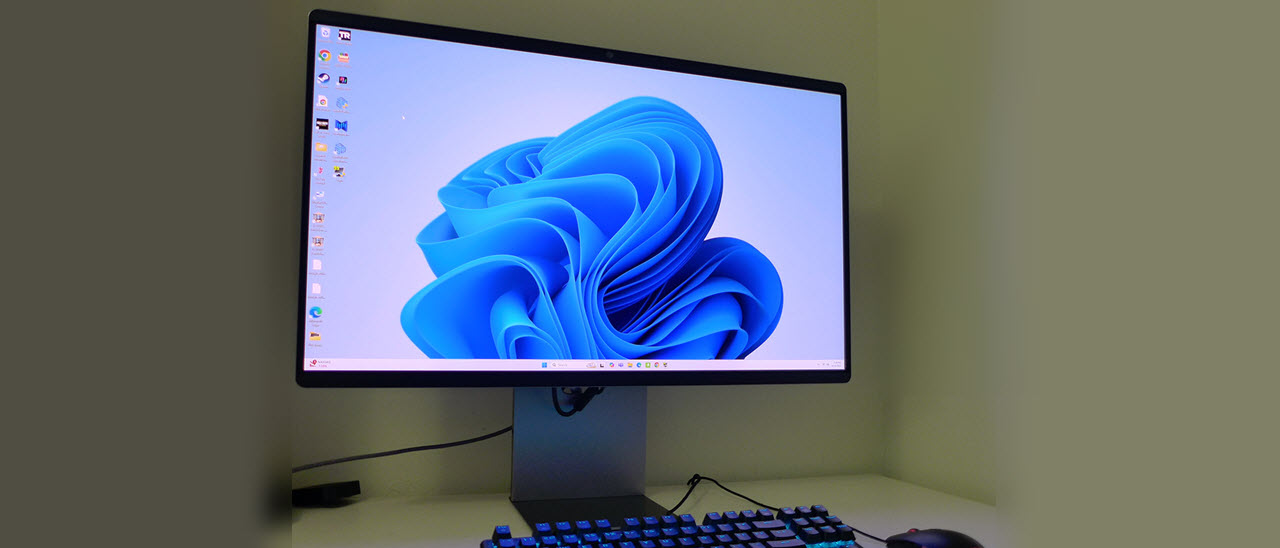Why you can trust Tom's Hardware
The M9 has only four image modes, but three of them alter color significantly from the BT.709 and DCI-P3 specs. Only Movie offers the right balance of grayscale, gamma and color accuracy.
Grayscale and Gamma Tracking
Our grayscale and gamma tests use Calman calibration software from Portrait Displays. We describe our grayscale and gamma tests in detail here.
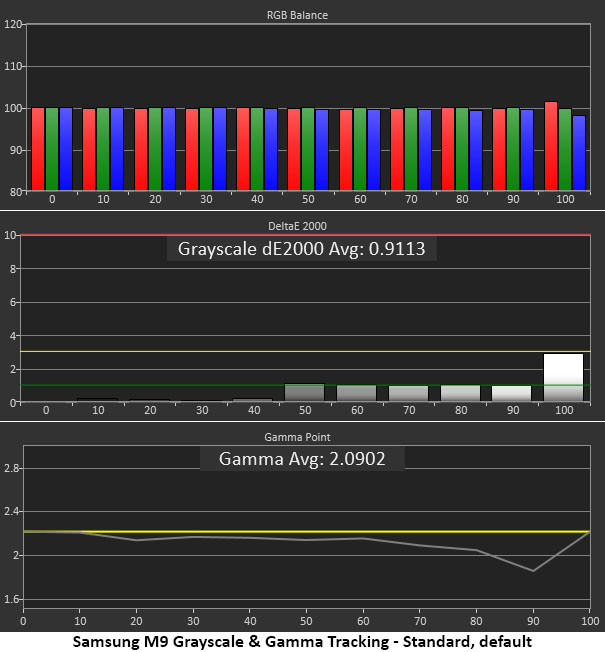
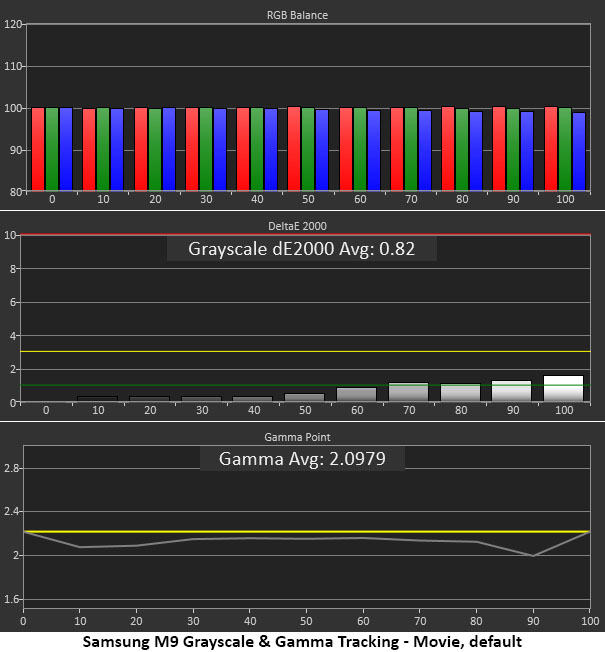
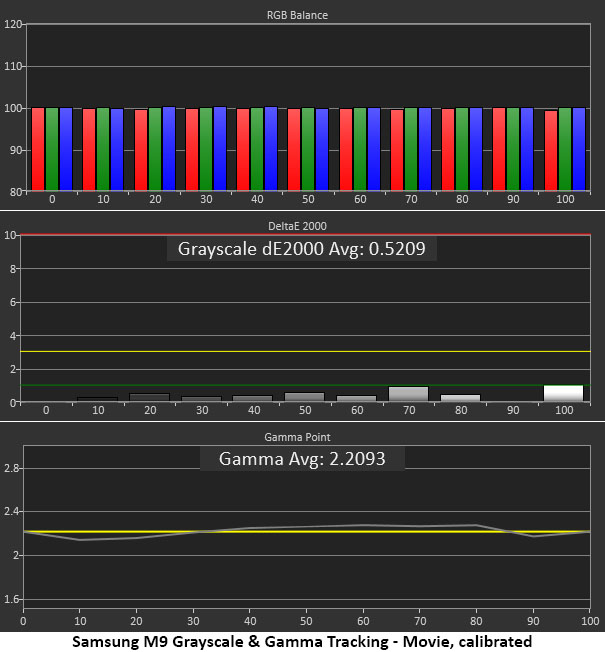
Eco mode proved too dark for my tests, so I ran my default measurements in Standard. Grayscale tracking is excellent with no visible errors. The gamma setting is called BT.1886, but my test showed it was closer to 2.1 power. This is a tad light, and the dip at 90% means highlights are a bit muted. You’ll see later that the color gamut is quite a bit off as well.
Switching to the Movie mode, color is much closer to the mark, but gamma is still too light. I calibrated the two-point white balance sliders and only needed to adjust the gains to get all errors below 1dE. The gamma preset worked best on BT.1886 with its slider set to +1. It isn’t ruler straight, but it is much closer to the 2.2 reference than before.
Comparisons
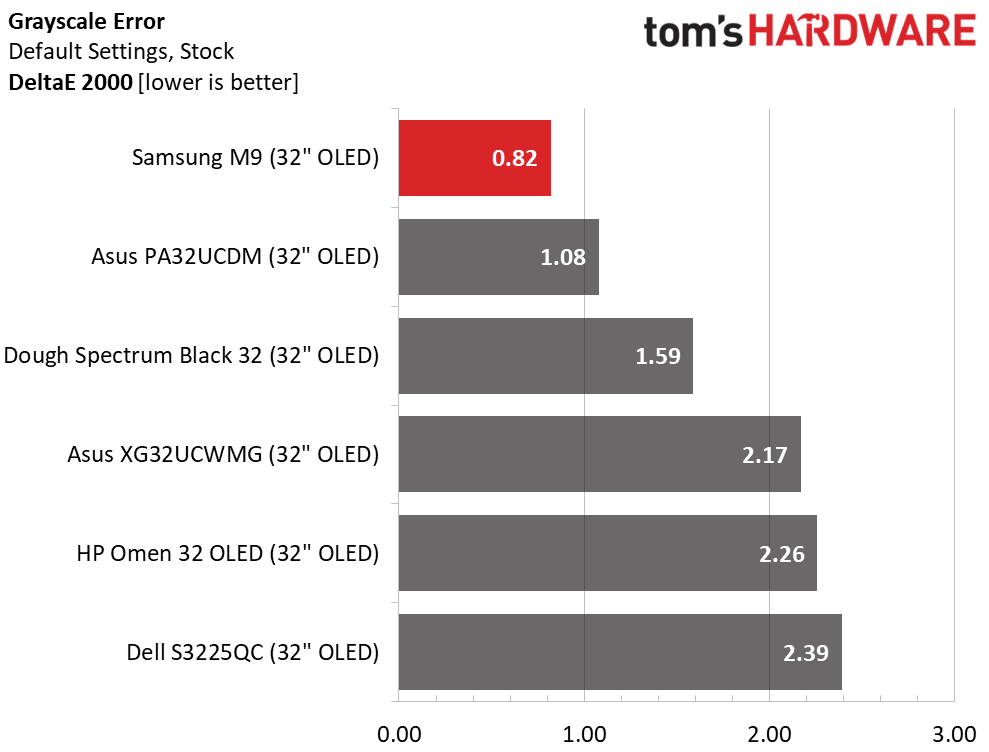
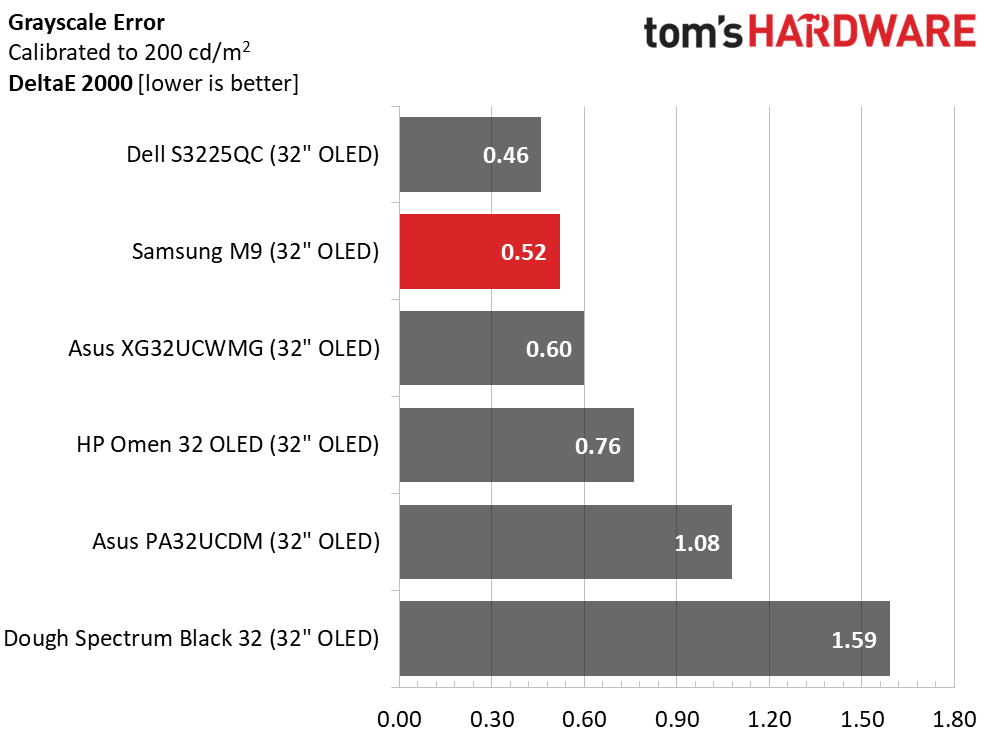
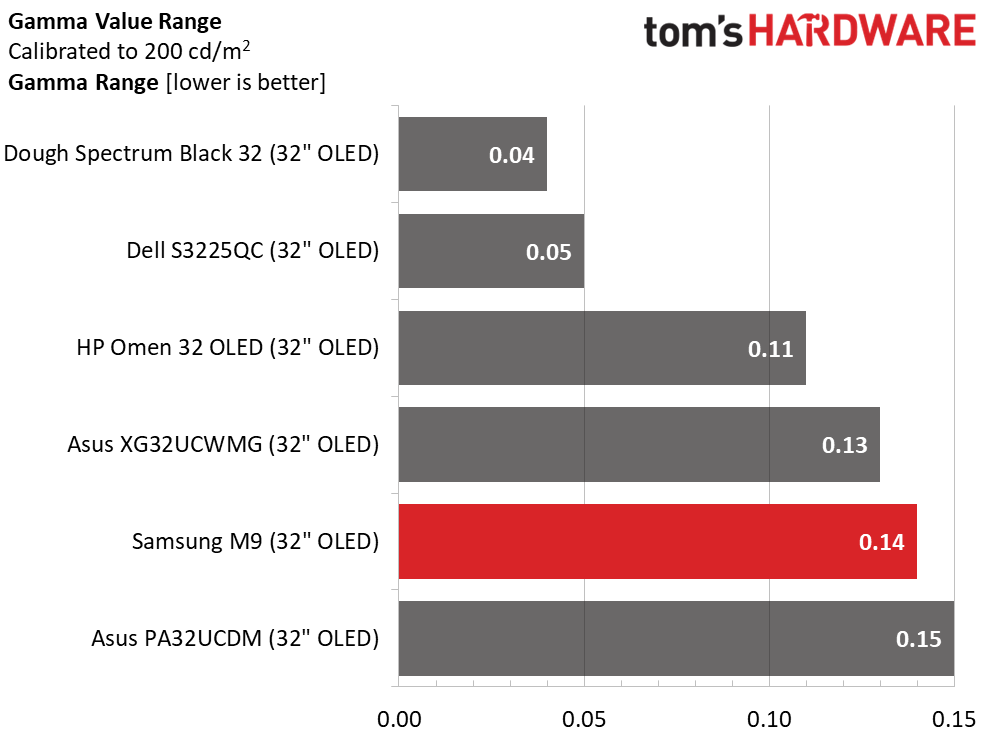
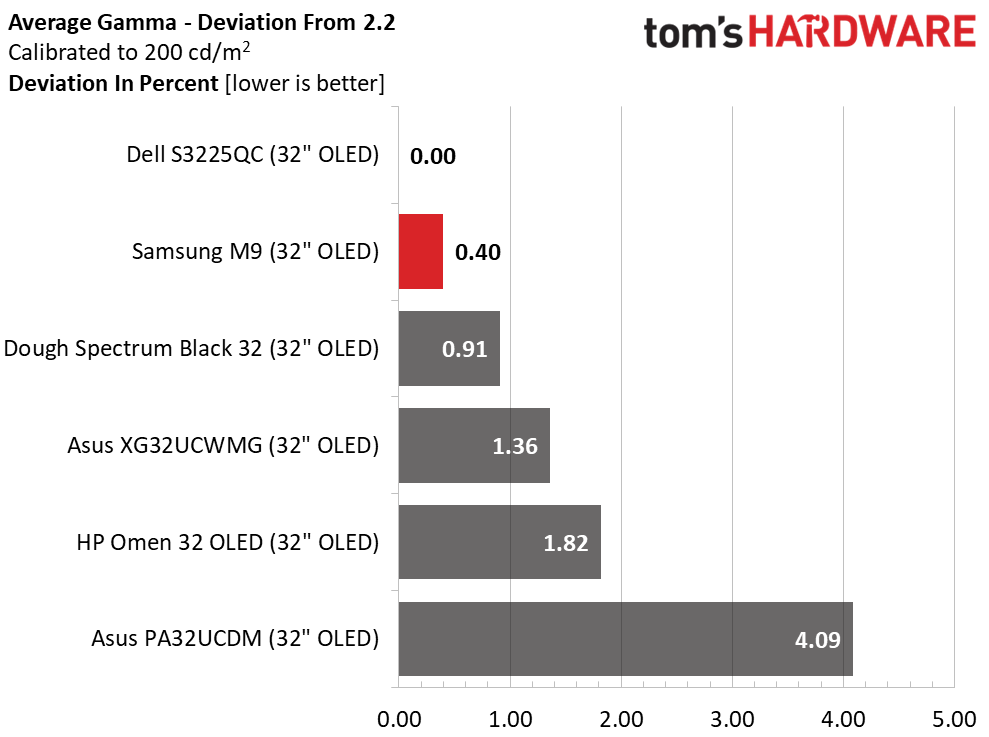
The M9 compares well to its competition with a top finish out of the box and second place after calibration. Adjusting the white balance isn’t necessary, but I recommend changing the gamma to BT.1886 +1 for the best possible luminance tracking. It only misses 2.2 by 0.4%, actual value 2.1, though the range of values is a little larger than the Dough and Dell screens.
Color Gamut Accuracy
Our color gamut and volume testing use Portrait Displays’ Calman software. For details on our color gamut testing and volume calculations, click here.
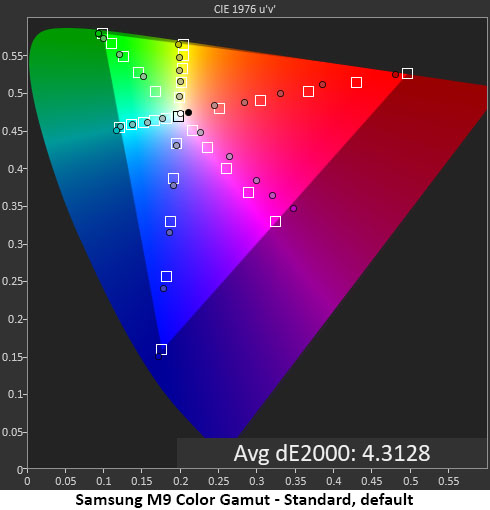
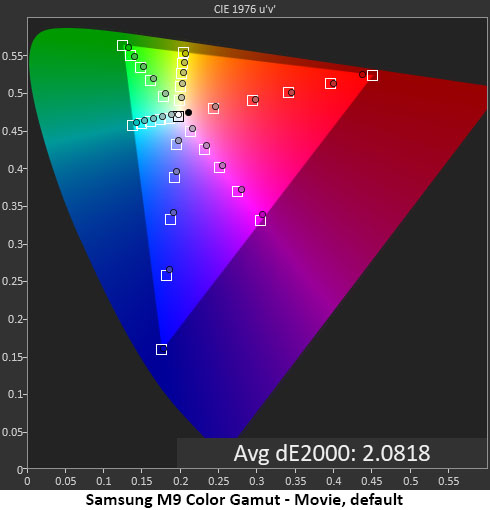
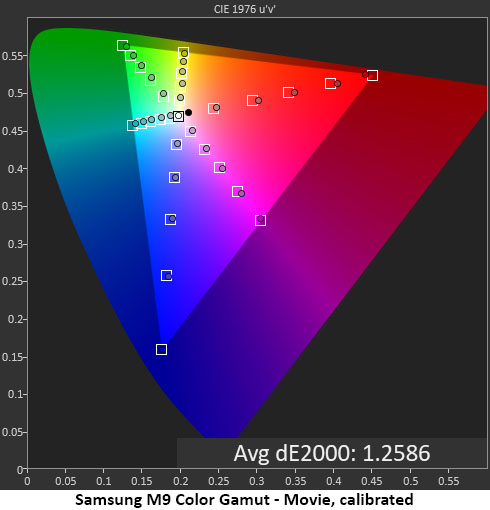
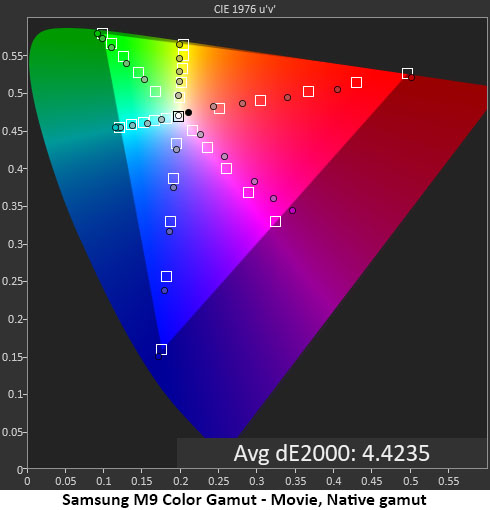
The color tests show the differences between the M9’s image modes and why I made the choices I did. Standard covers most of DCI-P3, which is a good thing, but the saturation points are off-target. Red and green are undersaturated between 20 and 80% while blue is a little too vivid. The balance is off, and you can see it in content. Color doesn’t look entirely natural.
Get Tom's Hardware's best news and in-depth reviews, straight to your inbox.
Movie nails the BT.709 gamut for SDR, coming up just a tad short in red with a slight hue error in magenta. Calibration tightens up the chart and fixes the magenta issue.
If you want the larger gamut in Movie mode, pick Native from the gamut selections. It shows the same behavior I recorded in the Standard mode, with undersaturation in red and green and magenta hue errors. Based on this result, I’d recommend using Auto for the color space setting to keep BT.709 in play for SDR content.
Comparisons
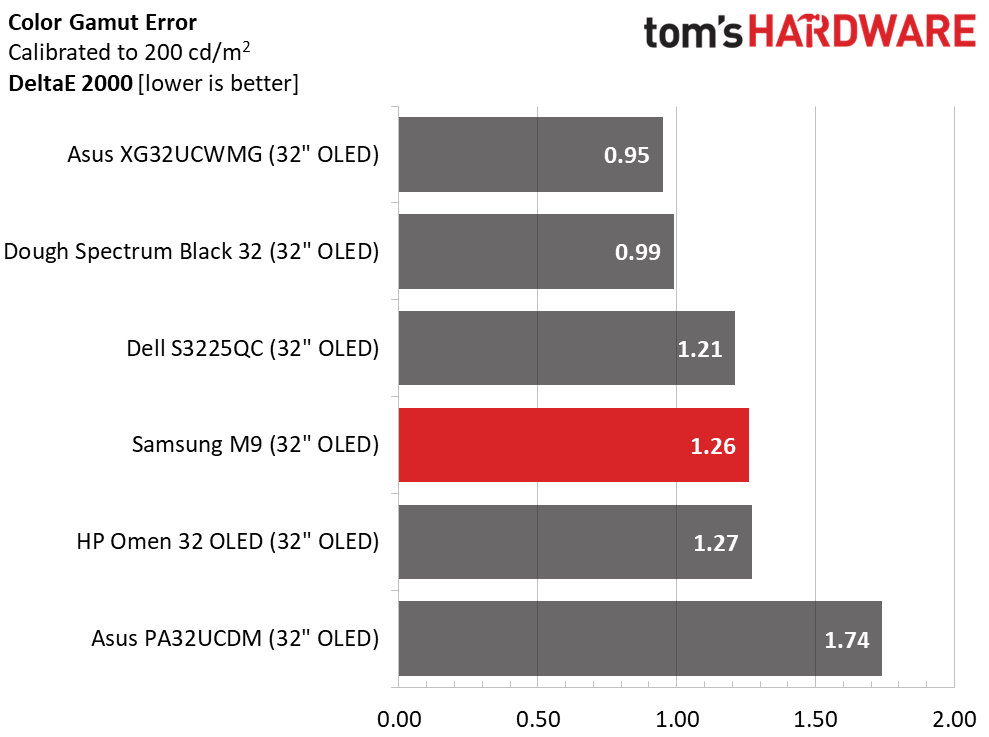
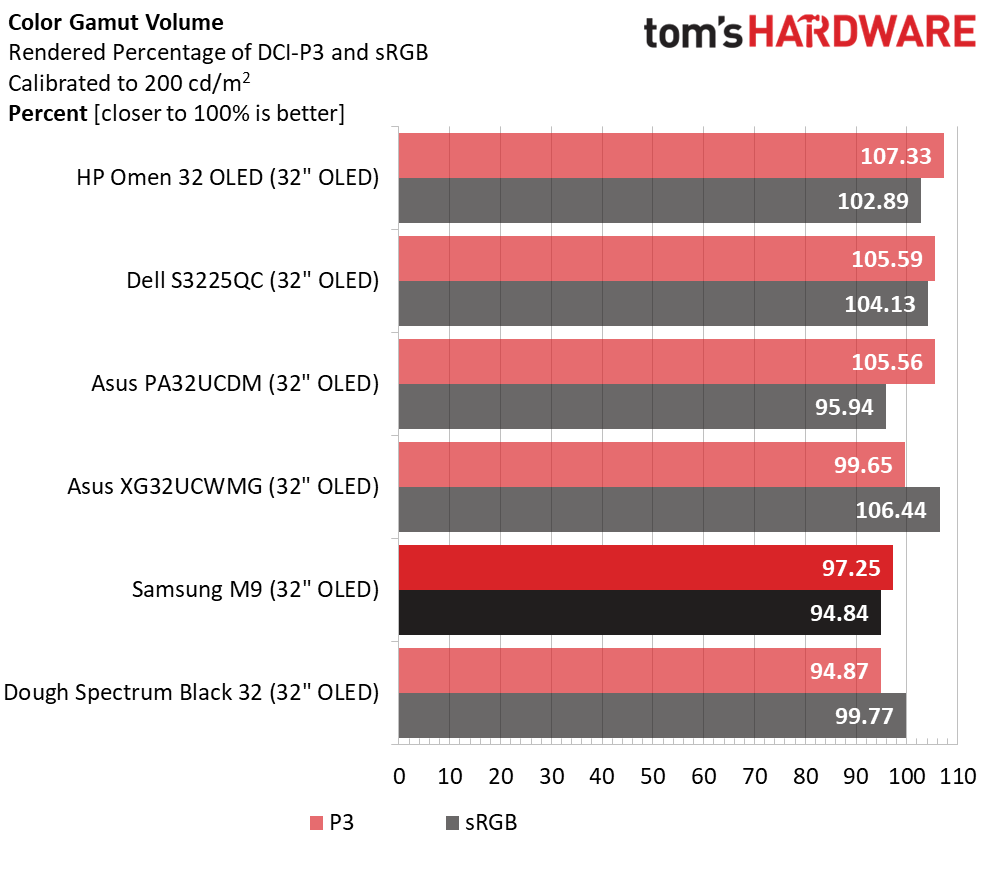
If you keep the M9 set to Auto color space, it runs with the best professional screens with a 1.26dE gamut error. It doesn’t get much better than that. The wide gamut is best used with HDR content as you’ll see on the next page.
In the volume test, the M9 managed 97.25% coverage of DCI-P3, which is a bit below average for Quantum Dot monitors. It is in line with non-QD screens, and it is still a very colorful monitor, just less so than the top three. sRGB coverage is just under 95% which makes it suitable for critical applications.
Test Takeaway: You have to hunt for the M9’s color accuracy, but in Movie mode, it performs well with the only needed change being to the gamma preset. Grayscale and gamut tracking are spot-on out of the box. My only nitpick here is gamut coverage, which is large but not as large as other Quantum Dot displays.
MORE: Best Gaming Monitors
MORE: How We Test PC Monitors
MORE: How to Buy a PC Monitor
Current page: Grayscale, Gamma and Color
Prev Page Brightness and Contrast Next Page HDR Performance
Christian Eberle is a Contributing Editor for Tom's Hardware US. He's a veteran reviewer of A/V equipment, specializing in monitors. Christian began his obsession with tech when he built his first PC in 1991, a 286 running DOS 3.0 at a blazing 12MHz. In 2006, he undertook training from the Imaging Science Foundation in video calibration and testing and thus started a passion for precise imaging that persists to this day. He is also a professional musician with a degree from the New England Conservatory as a classical bassoonist which he used to good effect as a performer with the West Point Army Band from 1987 to 2013. He enjoys watching movies and listening to high-end audio in his custom-built home theater and can be seen riding trails near his home on a race-ready ICE VTX recumbent trike. Christian enjoys the endless summer in Florida where he lives with his wife and Chihuahua and plays with orchestras around the state.
